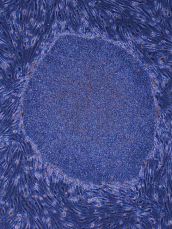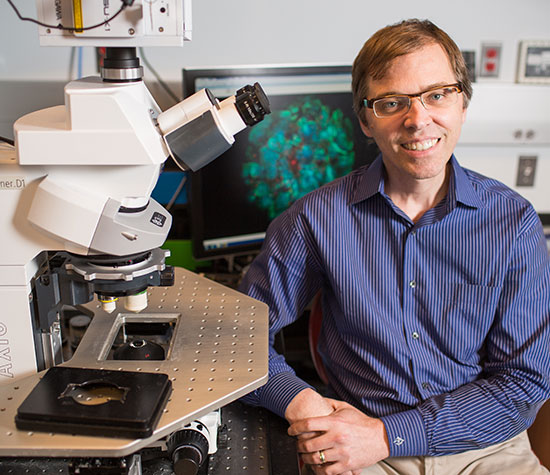
Error: No layouts found

Human iPSCs from the lab of Shinya Yamanaka, the Japanese researcher who first developed iPSCs and was awarded a share of the 2012 Nobel Prize in Physiology or Medicine for doing so.

Paul S. Frenette, M.D.
The field was reinvigorated by Shinya Yamanaka, M.D., a Japanese researcher. In 2006, Dr. Yamanaka found that inserting four particular genes into adult mouse skin cells caused those cells to go backward developmentally and turn into cells closely resembling embryonic stem cells. He then showed that these engineered cells, dubbed “induced pluripotent stem cells (iPSCs),” could—like embryonic stem cells—be coaxed to differentiate into many cell types. A year later, he duplicated the experiment using adult human skin cells. His discovery that mature, fully differentiated cells could be reprogrammed to become pluripotent would earn him a share of the 2012 Nobel Prize in Physiology or Medicine.
“Thanks to Dr. Yamanaka’s breakthrough, researchers finally have a source of embryonic-like human stem cells that is free of ethical constraints,” says Paul S. Frenette, M.D., professor of medicine (hematology) and of cell biology, and chair and director of the Ruth L. and David S. Gottesman Institute for Stem Cell and Regenerative Medicine Research at Einstein. “While it’s too early to assess the full impact of this technology, iPSCs have great potential in everything from disease modeling to drug testing to regenerative medicine.”
Einstein investigators are currently using iPSCs to study autism, schizophrenia, cataracts, liver disease and blood disease. To encourage further iPSC research, the Gottesman Institute has established a Pluripotent Stem Cell Unit, which creates iPSCs for the Einstein research community and provides training in maintaining and differentiating iPSCs.